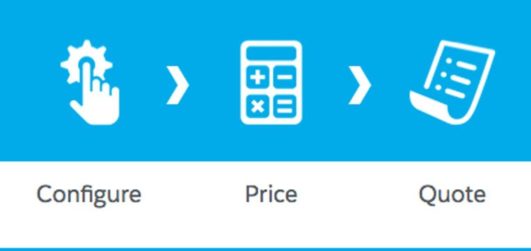
In 1909, Henry Ford famously said “any customer can have any color as long as it is black.” This statement made sense as long as customers were eager to get a car and were satisfied with getting one, any one, in the end. This has considerably changed for most businesses in the last 100+ years because not every customer wants or needs the same product.
In part 1 of our blog series on how to earn more using CPQ, let’s first take a look at how we got to where we are today.
It’s not your father’s configurator
Shortly after Ford’s statement, customers demanded more personalization capabilities from manufacturers, so they started to offer products with a small number of options like different colors for cars. The manufacturers had hoped that these limited choices would meet their customer’s needs but that was not the case. Customers were still not able to personalize their products in the way they liked to.
Here it is important to note that sales people created hand-written quotes and orders for each customer! This process was error-prone and lengthy but it had to be done to win any business. Even today some firms still use these and slightly updated techniques (e.g. with Excel files) to prepare quotes.
It first became possible to truly automate and personalize complex, industrial products like trucks in the 1960’s[1] when International Harvester used a computer solution for selling trucks. In the late 1970’s Digital Equipment Corporation (DEC) used the first rule-based[2] configurator for computers and saved millions of dollars each year by reducing manually created, erroneous, incomplete and infeasible configurations.
Throughout the 1970s and 1980s, many companies increased their personalization options, which meant their part lists (BOMs [3]) became more and more complex. This required different technological solutions like constraint-based configuration engines to keep the maintenance effort under control.
Up until then, only experienced sales people were using these expert systems to place orders but that changed considerably when computer access increased in the 1980’s and even more so in the 1990’s when Internet access became widely available.
Companies recognized they could provide considerable value to their customers when they allowed them to personalize their products. This started the era of Mass Customization[4] in the early 1990’s. I use this definition for “Mass Customization” from B. Joseph Pine II: “Mass Customization is the ability to develop, produce, market and deliver affordable goods and services with enough variety and customization that nearly everyone finds exactly what they want.”
In the 1990’s product configuration solutions were mostly integrated into ERP Systems like SAP, Oracle or Baan. These solutions were mostly focused on solving complex product configuration challenges while pricing and quote creation for configurable products appeared to be an afterthought. While a number of companies started offering standalone product configuration and pricing solutions for complex products in the 2000s it wasn’t until 2010 when the term “Configure-Price-Quote” or “CPQ” started showing up in the market place.
The transition to cloud-based solutions gained momentum in the second part of the 2000s. Today we have a mix of on-premise and cloud-based CPQ solutions where the majority is cloud-based or starting to offer cloud-based CPQ solutions. It is important to note that many of today’s CPQ solutions are aligned to specific CRM solutions like Salesforce or Microsoft Dynamics.
CPQ and now also Quote-to-Cash Systems play a key role in enabling not just sales people, but also channel partners and eCommerce[5] business on any device at any time.
In part two of this blog series, we will take a look at how CPQ can help sales and your bottom line.
[1] Knowledge-Based Configuration – From Research to Business Cases by Alexander Felfernig, Lothar Hotz, Claire Bagley, and Juha Tiihonen
[2] Compare Rule-based vs. Constraint-based Configuration Engines See Knowledge-Based Configuration
[3] BOM = parts list see also definition here
[4] Check B. Joseph Pine II, Prof. Frank Piller
[5] Route to Market = Sales Team, Channel Partner, eCommerce
